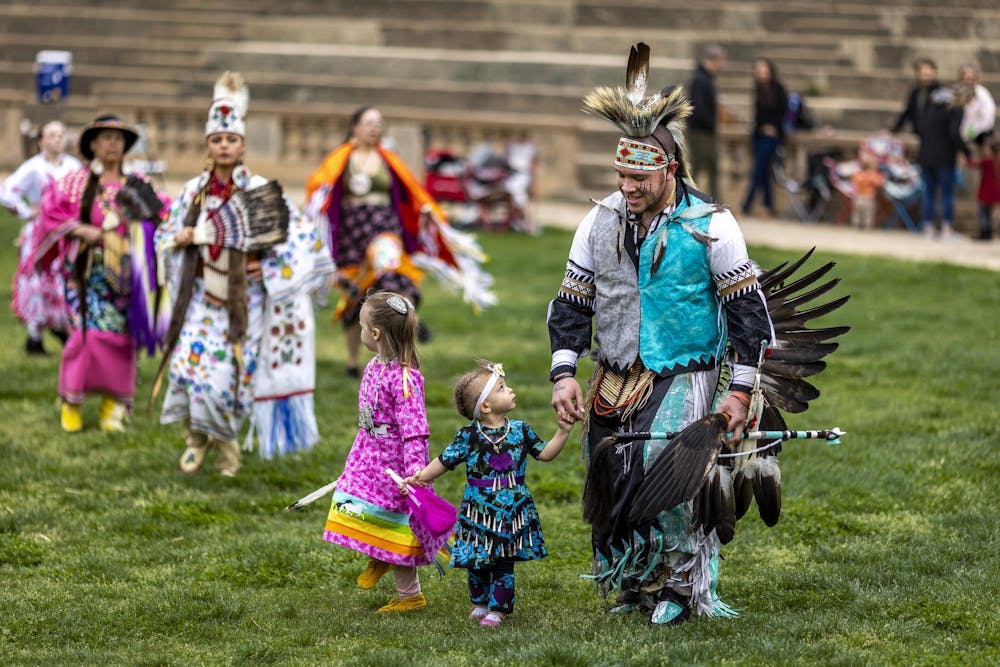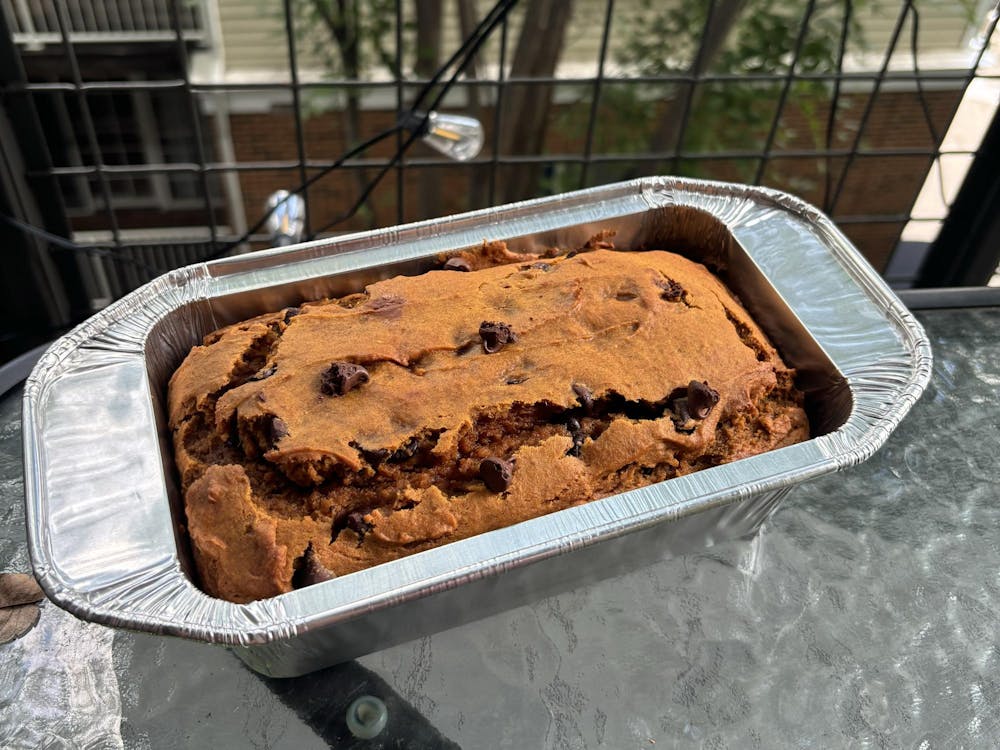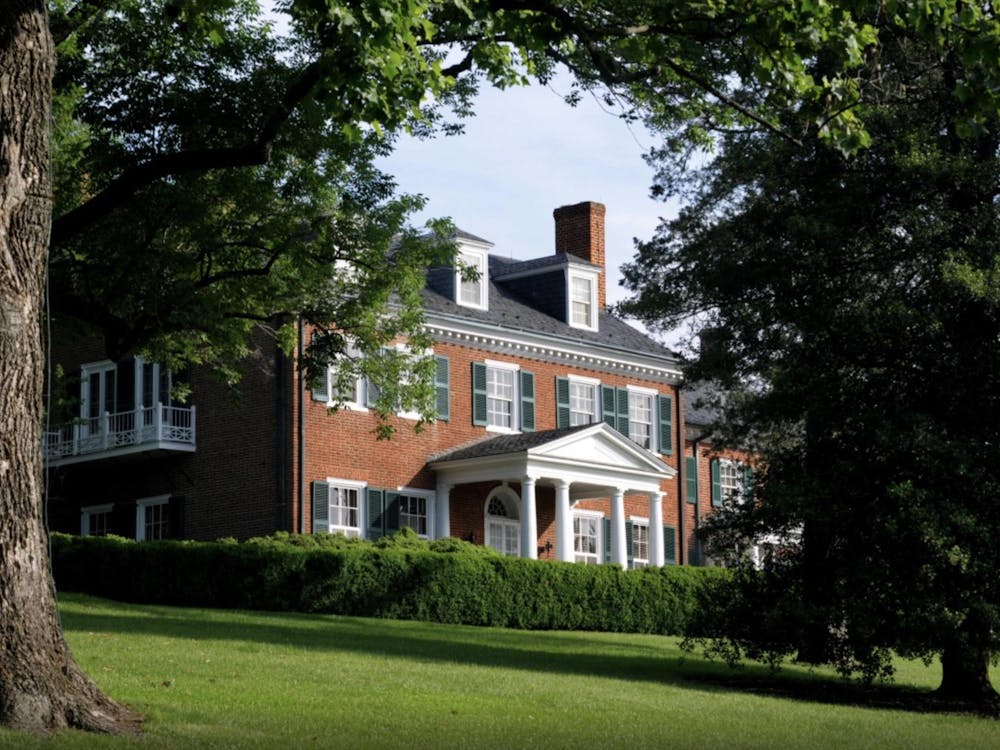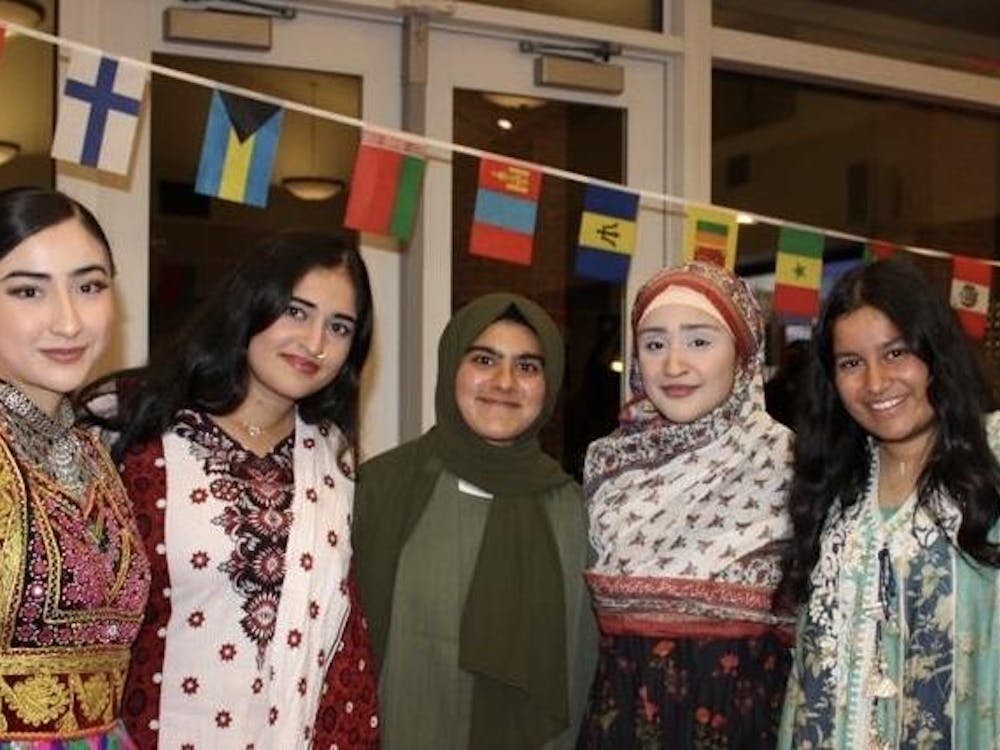In recent years, University community members have spearheaded several initiatives to amplify Native American voices. Specifically, student organizations, activist groups and academic programs have focused on highlighting individual differences among Indigenous students and bridging the gap between the University and Virginia tribes.
In the United States, Native American students are one of the most underrepresented groups in postsecondary education, a trend that has been attributed to cultural isolation, financial stress and a lack of campus support, among other factors. In 2022, the national college enrollment rate for 18- to 24-year-olds who identify as American Indian/Alaska Native was 26 percent, which was considerably lower than the overall national average rate of 39 percent.
A similarly disproportionate enrollment rate is apparent in the University student body. Among the 3,989 first-year students in the Class of 2028 who arrived in August, 38 identified as American Indian/Alaska Native, 14 identified as Native Hawaiian/Other Pacific Islander and six were enrolled citizens of a Native Nation, according to self-reported data collected by the University.
Even within the broader Native American community on Grounds, students may not necessarily find peers who share their nation’s culture. As a member of the Monacan Nation, Joseph Lilly, co-president of the Native American Student Union and fourth-year Architecture student, said meeting people of the same heritage is a rarity for Indigenous students — he, for one, can count the number of Monacan students he knows at the University on one hand.
Lilly recounted a rare experience that occurred when he was an underclassman at the Activities Fair — while he had set out to join a Native American organization, he ended up meeting a member of NASU who was part of the Monacan Nation.
“I started talking to a person at [the Activities Fair],” Lilly said. “She introduced me to the club, and eventually, we started talking more at different events … about our family history and ancestry — turns out we're cousins.”
While he found a family member at the University, Lilly said Native American students are still spread thin across Grounds. He acknowledged how every Indigenous nation has its own culture and politics but that students must set aside these differences to build solidarity in an already small community.
“Even within smaller states, there's multiple nations and sometimes, even within those nations, you get different group politics, so there's always division,” Lilly said. “But at U.Va., we don't really have the luxury of a large enough community that we can have those divisions. There's not a ton of us at all.”
Still, Lilly said University organizations aim to highlight the diversity of Indigenous cultures and traditions. NASU, an educational and activist organization, welcomes non-Native students and students of Native Nations alike, with members hailing from Indigenous nations of present-day Canada, the U.S., Central America and South America. NASU’s annual Powwow, one of its largest events, has previously featured the cultures of Powhatan tribes, the Monacan Nation and the Chickahominy tribe.
To celebrate Native American Heritage Month this November, NASU is spotlighting various Indigenous cultures through a series of events. Last week, members of the organization watched “Retablo,” a Peruvian movie that features Indigenous communities of South America. Members also plan to host a beading event Thursday where students can make their own earrings. According to Lilly, these events, while educational, primarily serve as opportunities for social bonding.
“We're trying to provide a place where … [Native American students] can come and talk to us,” Lilly said. “We try to have different educational events throughout the year, but the majority of our events are just community-focused.”
Besides NASU, the University’s Native and Indigenous Relations Community, a collection of faculty, staff, students and alumni, is engaged in ongoing projects and partnerships with the goal of supporting Indigenous communities. In one initiative, NIRC has worked with Virginia tribes and the Presidential Committee on the George Rogers Clark statue to create a garden on West Main Street where a statue of Clark, a Revolutionary War military officer, once stood. The statue had referred to Clark as the “Conqueror of the Northwest” and displayed him confronting three unarmed Native Americans. It was removed in 2021.
In the past two years, the University has also taken steps to strengthen its connection with Virginia tribes. The Office for Diversity, Equity and Inclusion created the Tribal Relations website to provide a resource for those of Native Nations who are interested in learning more about the University. The website includes a video acknowledging the Monacan Nation, whose land the University is built on.
A notable addition to University staff is the inaugural tribal liaison position, which was developed in partnership with the seven federally recognized tribes in Virginia. Kody Grant took up the position in June of 2023 with the goal of increasing the presence of Native Americans on Grounds. He described his position as a “switchboard” that facilitates communication between Native Nations and the University.
“One of the main things that tribal leadership asked for was a liaison — somebody they could call and have available for them,” Grant said. “[The position] serves as that middle point … to put people in touch.”
Grant said a significant portion of his work centers on outreach, as he strives to inform tribal communities of possible paths they can take at the University. He highlighted the U.Va. Facilities Management Apprenticeship Program, a four-year program which provides individuals the opportunity to learn a skilled trade.
“A lot of my focus is outreach, making sure that folks are aware of U.Va. because they might not know exactly what specific programs we offer that might be of value or interest to them,” Grant said.
For Lilly, having Grant as a resource is a step forward for the University. Lilly cited other initiatives that have impacted Indigenous students, such as the minor in Native American Indigenous Studies — which was first offered when Lilly was an underclassman — and the Multicultural Student Center’s collaboration with Native American students.
“I would say U.Va. is moving on the right track. It’s kind of in between not enough and right where it needs to be. It’s moving in the right direction, and that's been happening over at least the time I've been here for the past four years,” Lilly said.
With more work to be done in supporting Native American communities on Grounds, Lilly said one way people can effect change is by truly recognizing Native American individuals. For Lilly, this gesture means setting aside misconceptions of Indigenous culture and seeing Native Americans as real, ordinary people with a rich history.
“I think the big thing is realizing that Native Americans aren't only confined to history books. We are still present [and] active in communities,” Lilly said. “We're normal people, we have a history, and we're still here.”





